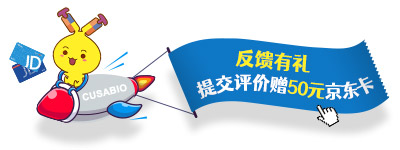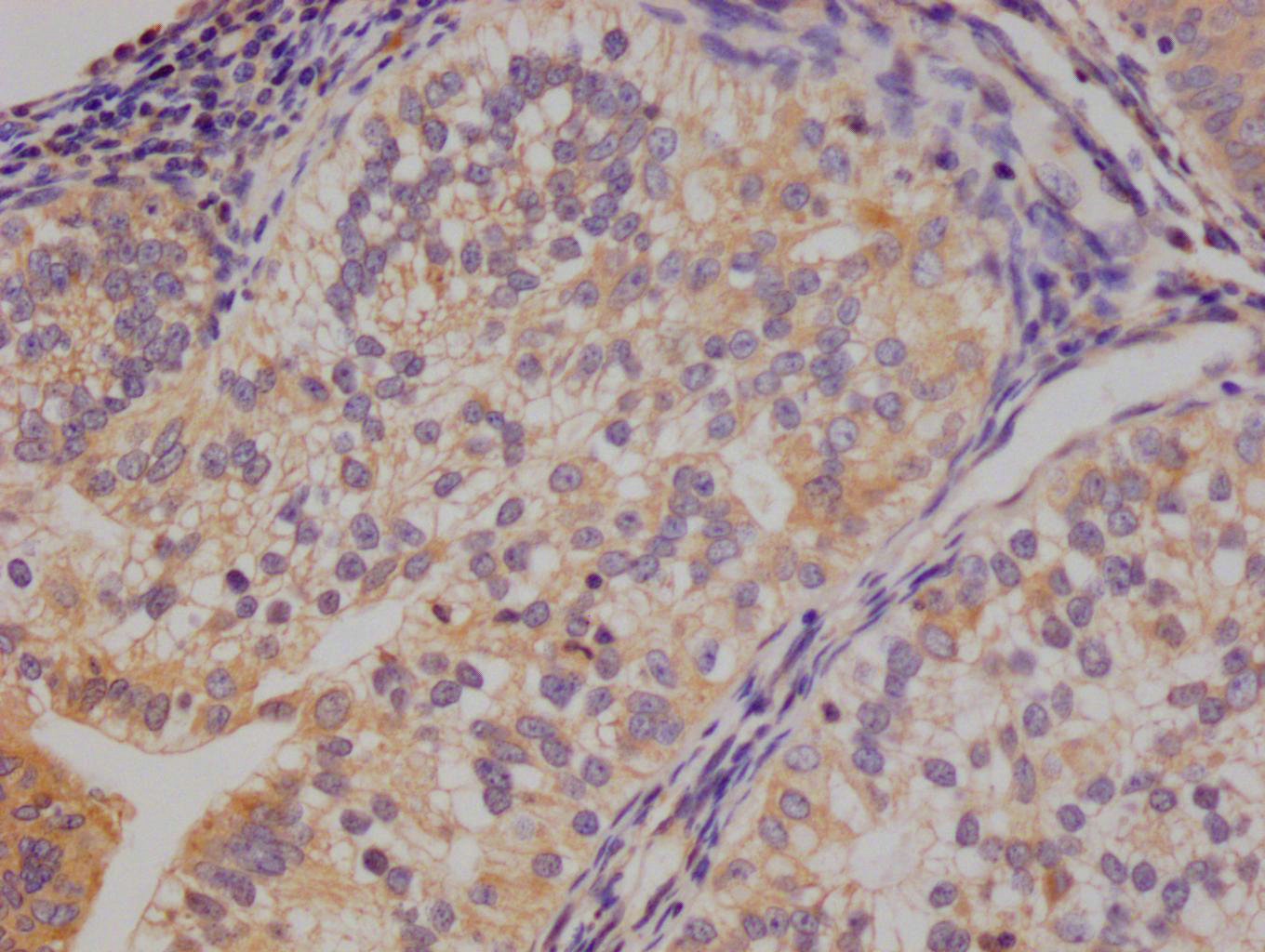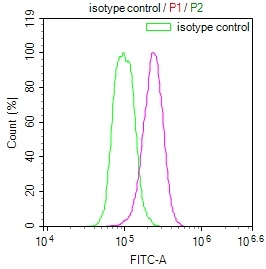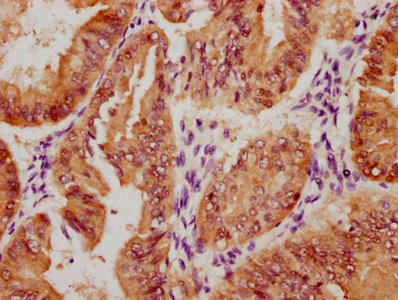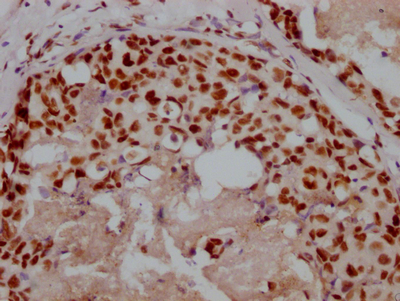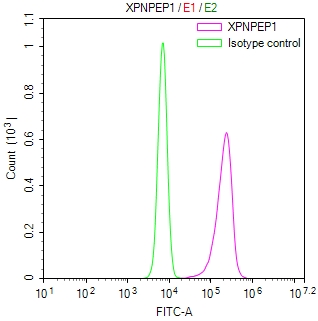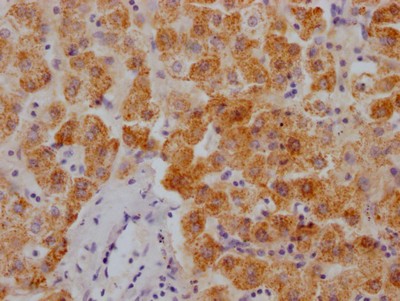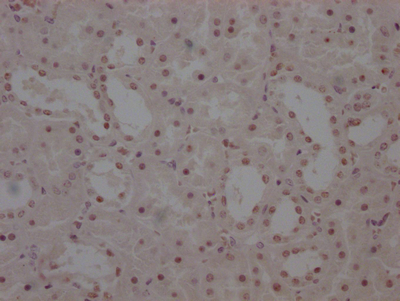-
中文名称:FT Antibody
-
货号:CSB-PA871202XA01DOA
-
规格:¥880
-
其他:
产品详情
-
产品名称:Rabbit anti-Arabidopsis thaliana (Mouse-ear cress) FT Polyclonal antibody
-
Uniprot No.:
-
基因名:FT
-
别名:Protein FLOWERING LOCUS T FT At1g65480 F5I14.3
-
宿主:Rabbit
-
反应种属:Arabidopsis thaliana
-
免疫原:Recombinant Arabidopsis thaliana FT protein (127-141aa)
-
免疫原种属:Arabidopsis thaliana (Mouse-ear cress)
-
标记方式:Non-conjugated
-
克隆类型:Polyclonal
-
抗体亚型:IgG
-
纯化方式:Antigen Affinity Purified
-
浓度:It differs from different batches. Please contact us to confirm it.
-
保存缓冲液:Preservative: 0.03% Proclin 300
Constituents: 50% Glycerol, 0.01M PBS, pH 7.4 -
产品提供形式:Liquid
-
应用范围:ELISA
-
Protocols:
-
储存条件:Upon receipt, store at -20°C or -80°C. Avoid repeated freeze.
-
货期:Basically, we can dispatch the products out in 1-3 working days after receiving your orders. Delivery time maybe differs from different purchasing way or location, please kindly consult your local distributors for specific delivery time.
-
用途:For Research Use Only. Not for use in diagnostic or therapeutic procedures.
相关产品
靶点详情
-
功能:Component of the mobile flower-promoting signal (floral stimulus or florigen). Promotes the transition from vegetative growth to flowering. Required for 'SEPALLATA3' (SEP3) and 'FRUITFULL' (FUL) accumulation in mature rosette leaves. Seems to acts in parallel with 'LEAFY' to induce flowering by regulating 'APETALA1'. Translated in leaves and then transported to the shoot apical meristem where it activates the transcription of several floral meristem identity genes. May play a role in both the autonomous and the long-day flowering pathways.
-
基因功能参考文献:
- role of FT in flowering PMID: 28965831
- FT in Arabidopsis thaliana is produced in two unique files of phloem companion cells. PMID: 29483267
- FT expression during night time temperatures and flowering PMID: 26856528
- Variation in shade-induced flowering in Arabidopsis thaliana results from FLOWERING LOCUS T allelic variation. PMID: 29117199
- Study conclude that thermoperiodic control of floral transition is associated with modulation of the diurnal expression patterns of FT, with timing of temperature alteration being important rather than average daily temperature. PMID: 28028164
- Results demonstrated that meristematic FT overexpression generates a phenotype with an early flowering independent of photoperiod when compared with wild type (WT) plants. PMID: 27154816
- AtFT-induced flowers were morphologically normal and produced viable pollen grains and viable self- and cross-pollinated seeds. PMID: 26132805
- Post-translational mechanisms might control FT protein abundance. PMID: 26548373
- The temporal pattern of FT expression encodes information that discriminates long days from other inputs. Accelerated flowering requires high FT expression over several days. PMID: 26212862
- FE protein promotes flowering through transcriptional activation of FT and Ftip1. PMID: 26239308
- Induced and natural variation of promoter length modulates the photoperiodic response of FT protein. PMID: 25087553
- Specific mutations in at least four different residues are sufficient to convert FT into a complete TFL1 mimic, even when expressed from TFL1 regulatory sequences. PMID: 24532592
- FT binds to diurnally oscillating phospholipids that accelerate flowering. PMID: 24698997
- SUPPRESSOR OF OVEREXPRESSION OF CONSTANS 1 (SOC1) and FT regulate the SPL3, SPL4 and SPL5 genes by directly binding to the gene promoters in response to photoperiod signals. PMID: 21988498
- These results emphasize the expanding role of FT in affecting general determinate growth. PMID: 23333977
- FT protein enters the phloem translocation stream and subsequently exits the phloem and enters the apical tissue, where it initiates the vegetative to floral transition. PMID: 23607279
- the cotyledon is an important organ for producing FT protein to induce flowering PMID: 23204014
- PHYTOCHROME AND FLOWERING TIME1 (PFT1), MED25, is degraded by the proteasome and proteasome-mediated PFT1 turnover is coupled to its role in stimulating the transcription of FLOWERING LOCUS T. PMID: 22992513
- Both FT RNA and protein move long distance and act redundantly to integrate the photoperiodic signals. PMID: 22614833
- FT acts downstream of miR156 and SPL3. PMID: 22427344
- FLOWERING LOCUS T PMID: 22442143
- Loss of polycomb group protein repression causes down-regulation of FT. Chromatin changes are not key factors in determining FT spatial expression. PMID: 21917549
- GI can bind to three FT repressors: SHORT VEGETATIVE PHASE (SVP), TEMPRANILLO (TEM)1, and TEM2. PMID: 21709243
- temporal separation of reproductive onset and vegetative growth into different seasons via FT1 and FT2 provides seasonality and demonstrates the evolution of a complex perennial adaptive trait after genome duplication PMID: 21653885
- Data show induction of rapid flowering in apple seedlings at 1.5-2 months by using the Apple latent spherical virus (ALSV) vector expressing a FLOWERING LOCUS T (FT) gene from Arabidopsis thaliana. PMID: 21132560
- Distant regulatory regions are required for FT transcription, reflecting the complexity of its control and differences in chromatin status delimit functionally important cis-regulatory regions. PMID: 20472817
- Results indicate that allelic variation at pathway integrator genes such as FT can underlie phenotypic variability and that this may be achieved through cis-regulatory changes. PMID: 19652183
- Reduction of FT mRNA in COL9 overexpressing lines of A. thaliana delays flowering. PMID: 16115071
- We propose that FT functions through partner-dependent transcriptional activation and that this occurs at several sites. Organ fate may depend on both degree of activation and the developmental stage reached by the organ before activation occurs. PMID: 16155177
- NTL8 mediates salt-responsive flowering via FT in Arabidopsis. PMID: 17410378
- it is concluded that that FT protein acts as a long-distance signal that induces Arabidopsis flowering PMID: 17446353
- To our knowledge, FT is the only known protein that serves as a long-range developmental signal in plants. PMID: 17540569
- We demonstrate that export of FT protein from phloem companion cells is sufficient to induce flowering. PMID: 17540570
- acts redundantly with TSF and SOC1 to promote flowering in response to CONSTANS and far red enriched light PMID: 18667727
- TEMPRANILLO genes (TEM1 and TEM2) act as novel direct FT repressors. PMID: 18718758
- Photoresponses are important for up-regulation of FT and for flowering. PMID: 18836142
- FLOWERING LOCUS T protein activity is transmissible through a graft junction and can promote flowering from a distance. PMID: 18849573
- FT and gibberellin act both independently and interactively in LD floral signalling. PMID: 18931352
- identification & characterization of CIB1 (At4g34530) protein; CIB1 stimulates FT messenger RNA expression, and it interacts with chromatin DNA of the FT gene that possesses various E-box elements except G box PMID: 18988809
- Reducing FLC levels in Bla-6 can induce FT expression and early flowering with low red light. PMID: 19563438
显示更多
收起更多
-
亚细胞定位:Cytoplasm. Nucleus. Endoplasmic reticulum.
-
蛋白家族:Phosphatidylethanolamine-binding protein family
-
组织特异性:Mostly localized in leaves vasculature.
-
数据库链接:
Most popular with customers
-
-
YWHAB Recombinant Monoclonal Antibody
Applications: ELISA, WB, IHC, IF, FC
Species Reactivity: Human, Mouse, Rat
-
Phospho-YAP1 (S127) Recombinant Monoclonal Antibody
Applications: ELISA, WB, IHC
Species Reactivity: Human
-
-
-
-
-

